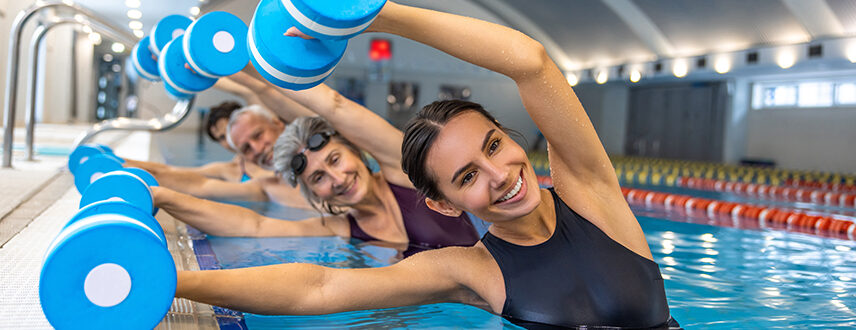
Joint pain and stiffness can be a barrier to staying active, especially for individuals dealing with arthritis, recovering from injuries, or simply feeling the effects of aging. However, staying sedentary can actually make joint issues worse. The solution? Low-impact exercises. These gentle workouts provide all the benefits of movement—improved flexibility, strength, and cardiovascular health—without putting undue stress on your joints.
Here’s a guide to some of the best low-impact exercises that support joint health while keeping you fit, mobile, and energized.
1. Swimming and Water Aerobics
Why it’s great: Water supports your body weight, reducing pressure on joints while providing resistance that strengthens muscles. The buoyancy allows for fluid movement that would be difficult or painful on land.
Tips:
- Start with basic strokes like freestyle or backstroke.
- Try water walking or joining a water aerobics class for guided movements.
2. Walking
Why it’s great: Walking is accessible, free, and easy to modify to your fitness level. When done with good posture and supportive shoes, it strengthens muscles that support your joints—especially the hips, knees, and ankles.
Tips:
- Use flat, even surfaces to avoid unnecessary strain.
- Start with short walks and increase your distance over time.
3. Cycling or Stationary Biking
Why it’s great: Biking builds leg strength and improves cardiovascular health without the jarring impact of running or jumping. A stationary bike also eliminates the risk of falling.
Tips:
- Adjust the seat and handlebars for proper alignment.
- Begin with 10–15 minutes and increase gradually.
4. Yoga
Why it’s great: Yoga enhances flexibility, balance, and strength—all crucial for joint health. Many yoga poses gently stretch and strengthen the muscles around the joints, improving mobility.
Tips:
- Choose beginner or gentle yoga classes, such as Hatha or restorative yoga.
- Use props like blocks or straps for additional support.
5. Pilates
Why it’s great: Pilates focuses on core strength, alignment, and controlled movement, making it an excellent choice for those with joint concerns. It’s particularly beneficial for strengthening the muscles that stabilize the spine and hips.
Tips:
- Start with mat-based Pilates before advancing to machines like the Reformer.
- Work with a certified instructor to ensure correct form.
6. Tai Chi
Why it’s great: This ancient Chinese martial art involves slow, flowing movements and deep breathing. Tai Chi enhances balance, coordination, and flexibility, which helps reduce joint stress and the risk of falls.
Tips:
- Look for beginner classes at community centers or online.
- Practice regularly to experience long-term joint and mobility benefits.
7. Resistance Training with Light Weights or Bands
Why it’s great: Strengthening the muscles around your joints helps protect and stabilize them. Using light resistance minimizes strain while still building muscle.
Tips:
- Focus on proper technique over heavy lifting.
- Incorporate exercises like bicep curls, leg lifts, and seated rows using resistance bands or light dumbbells.
Low-impact exercise isn’t just for rehabilitation—it’s a smart and sustainable way to stay active for life. Whether you’re managing joint pain or simply looking to protect your mobility, these gentle exercises can help you stay strong, flexible, and pain-free.
As always, consult your doctor or a physical therapist before starting any new fitness routine, especially if you have a pre-existing condition. Then, ease into it, listen to your body, and enjoy the movement. Your joints will thank you.
